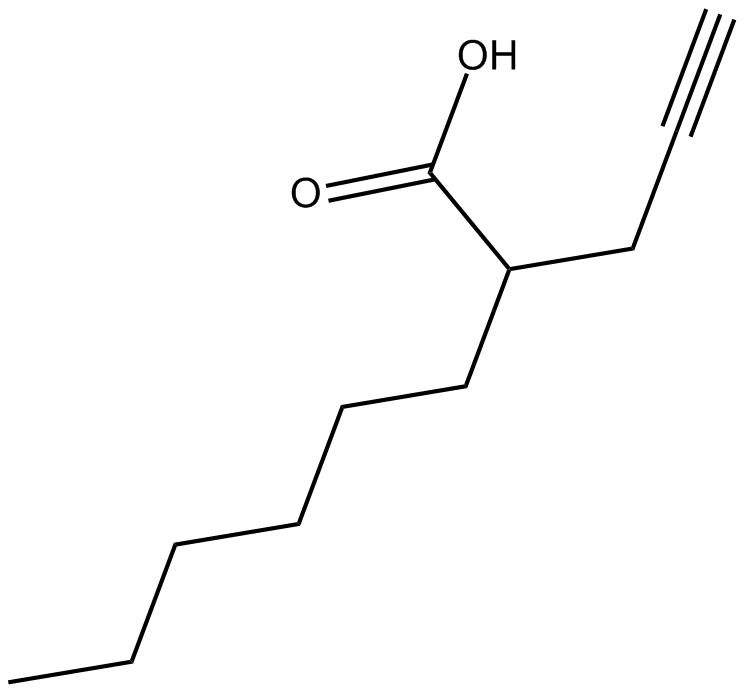2-hexyl-4-Pentynoic Acid |
| Catalog No.GC11249 |
Potent and robust HDACs inhibitor
Products are for research use only. Not for human use. We do not sell to patients.

Cas No.: 96017-59-3
Sample solution is provided at 25 µL, 10mM.
2-hexyl-4-Pentynoic Acid is a potent and robust inhibitor of HDAC with IC50 value of 13 μM [1].
Histone deacetylases (HDACs) are a class of enzymes that remove acetyl groups from ε-N-acetyl lysines on histones, allowing the histones to wrap the DNA more tightly. DNA expression is regulated by de-acetylation and acetylation.
2-hexyl-4-Pentynoic Acid, a valproic acid (VPA) derivatives, is a potent and robust HDACs inhibitor. In cerebellar granule cells, 2-hexyl-4-Pentynoic Acid (5 μM) significantly and dose-dependently increased acetylated histone H3 (Ac-H3) levels, and at 50-100 μM led to a maximal increase of 600-700%, compared with only a 200% increase by VPA at 100 μM. 2-hexyl-4-Pentynoic Acid also completely blocked glutamate-induced cell death at 50-100 μM. Also, 2-hexyl-4-Pentynoic Acid restored glutamate-induced neuronal loss. At 50 μM, 2-hexyl-4-Pentynoic Acid effectively increased HSP70-1a and HSP70-1b mRNA levels through HDAC inhibition [1].
Reference:
[1]. Leng Y, Marinova Z, Reis-Fernandes MA, et al. Potent neuroprotective effects of novel structural derivatives of valproic acid: potential roles of HDAC inhibition and HSP70 induction. Neurosci Lett, 2010, 476(3): 127-132.
Average Rating: 5 (Based on Reviews and 36 reference(s) in Google Scholar.)
GLPBIO products are for RESEARCH USE ONLY. Please make sure your review or question is research based.
Required fields are marked with *




















